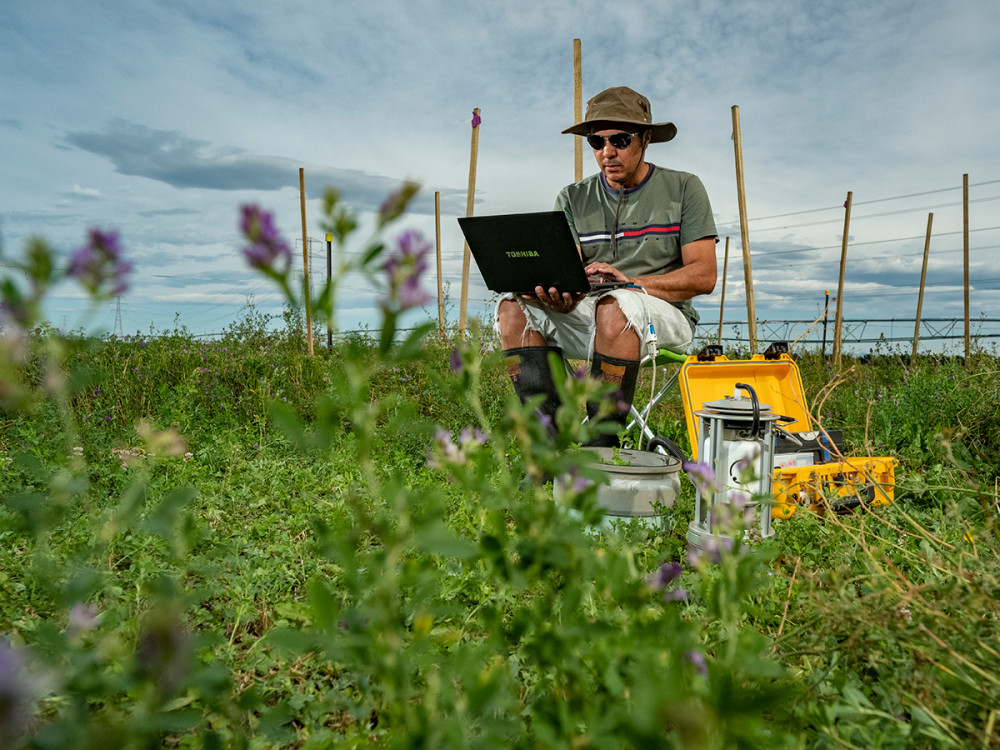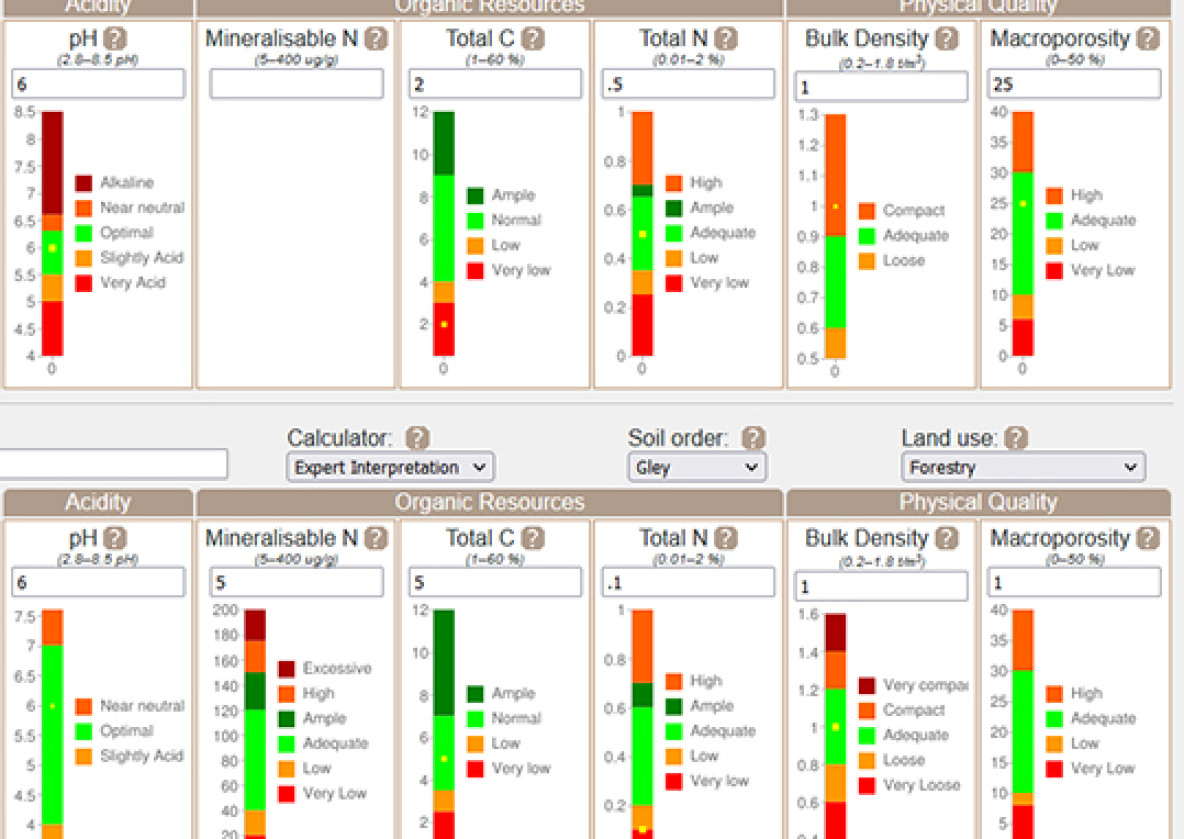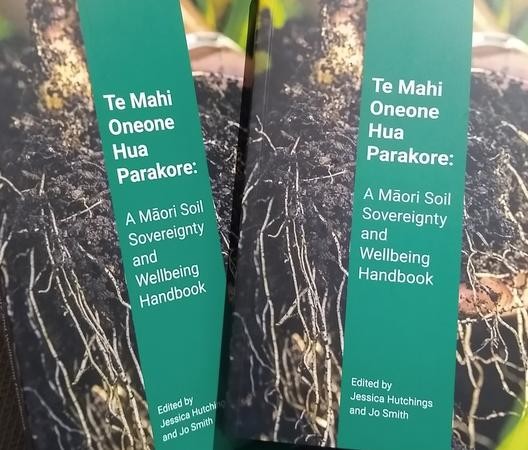Soil quality and its monitoring
How is soil quality assessed in New Zealand?
Most regional councils in New Zealand assess soil quality via monitoring schemes under various land uses: forestry, cropping and horticulture, dairy, and drystock. These land uses are monitored because they require good soil quality, and some activities under these land uses can result in poor soil quality and environmental issues.
Seven soil characteristics are part of the soil quality monitoring: total carbon, total nitrogen, mineralisable nitrogen, acidity, plant-available phosphorus, bulk density and macroporosity. Other important soil properties are not part of general monitoring but may be analysed when the need arises. For instance, when a soil is suspected of having been contaminated, trace elements and heavy metals may be analysed, or for soil biodiversity studies soil (micro)organisms and DNA analyses may be needed.
The table below is listing national soil quality monitoring indicators (modified from the Ministry for the Environment’s Land and Soil Monitoring: A Guide for SoE and Regional Council Reporting, 2009):
|
Indicator |
Soil quality information |
Why is this measure important? |
|
Total carbon |
Organic matter carbon content |
Organic matter helps soils retain moisture and nutrients, and gives good soil structure for water movement and root growth. |
|
Total nitrogen |
Organic matter nitrogen content |
Nitrogen is an essential nutrient for plants and animals. Most nitrogen in soil is within the organic matter fraction, and total nitrogen gives a measure of these reserves. |
|
Mineralisable nitrogen |
Readily decomposed organic nitrogen |
Not all the organic matter nitrogen can be used by plants, and some soil organisms change the nitrogen to forms that plants can use. Mineralisable nitrogen gives a measure of how much organic nitrogen is available to the plants, and the activity of these organisms. |
|
Soil pH |
Soil acidity |
Most plants and soil animals have an optimal pH range for growth. Indigenous species are generally tolerant of acid conditions, but introduced pasture and crop species require a more alkaline soil. |
|
Olsen phosphorus |
Plant-available phosphorus |
Phosphorus is an essential nutrient for plants and animals. Many soils in New Zealand have low available phosphorus, and phosphorus needs to be added for agricultural use. However, excessive levels can increase loss to waterways, contributing to eutrophication. |
|
Bulk density |
Soil compaction |
Compacted soils will not allow water or air to penetrate, do not drain easily, and restrict root growth. |
|
Macroporosity |
Degree of soil aeration and compaction |
Macropores are important for air penetration into soil, and are the first pores to collapse when soil is compacted. |
Soil property data associated with the monitoring from 1996 to 2018 can be downloaded from the Stats NZ soil quality and land use environmental indicators webpage.
When and where does soil monitoring take place?

Soil quality monitoring is carried out by most New Zealand regional councils, as part of the national State of the Environment (SoE) monitoring. Soils are sampled from the wide range of land uses and soil types in New Zealand. Depending on the intensity of the land use, soils are re-sampled every 1 to 20 years. Soils under native vegetation are likely to be in a stable state, and soil quality is unlikely to change, whereas under intensive pasture or cropping soil quality can change rapidly, so soils under such land uses need more monitoring effort. Soil quality monitoring via the councils gives valuable information on soil functioning under different land uses, common problems and successes, and the impacts of soil use on the environment.
Landowners can monitor their soil quality via private companies such as fertiliser companies or (associated) soil-testing laboratories. This can be useful to determine how much fertiliser or irrigation is needed on specific soils and for specific crops. Laboratory results from your soil can be compared to target ranges of the different indicators to see whether your soil is in a healthy range. SINDI (soil indicators) is a web-based tool designed to help you interpret the quality or health of a soil you have sampled.
It is possible to monitor soils yourself with our Visual Soil Assessment field guides, but this is not a full soil quality test as certain characteristics have to be analysed in a laboratory. However, frequently looking at your soil is a very good way to familiarise yourself with your soil and notice any changes due to management or environmental impacts.
SINDI (soil indicators) is a web-based tool designed to help you interpret the quality or health of a soil you have sampled.
SINDIonline: Soil quality indicators
- Compare your soil with information from our soils database.
- Assess the intrinsic resources and biological, chemical and physical quality of your soil.
- See how your soil measures up against current understanding of optimal values.
- Learn about the effect each indicator has on soil quality and some general management practices that could be implemented to improve the soil.


